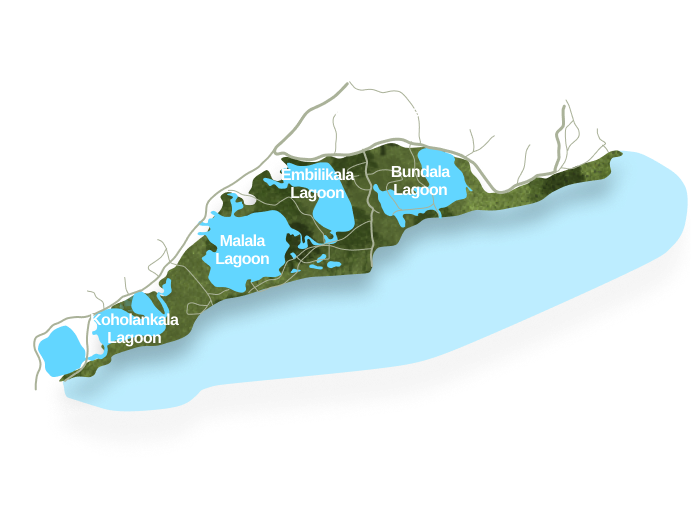Where land meets sea in shimmering silence, Bundala National Park unfolds as a sanctuary of salt-kissed lagoons, golden dunes, and the rustle of wings. Tucked into Sri Lanka’s southern coast, this quiet, otherworldly haven is famed for being the final refuge of the greater flamingo and a vital stopover for thousands of migratory birds. But there’s more to Bundala than its skies—it’s a place where elephants roam arid forests, turtles nest under starlight, and rare reptiles find solace in brackish marshes. A living mosaic of coast and wilderness, Bundala invites nature lovers to a lesser-trodden path brimming with delicate beauty.






Where the Wild Birds Rest
Bundala National Park stretches across a coastal landscape sculpted by tide and time .Five shallow lagoons glisten under the sun, connected by winding channels and framed by tangled mangroves, dry forest, and open grassland. These waters are alive with phytoplankton, sustaining a rich ecosystem that draws wildlife from across the region and beyond.
Between September and March, the park becomes a theatre of flight, as migrating birds from the far north arrive in clouds of colour and song. It is the only park in Sri Lanka where every species of waterbird recorded in the country can be found, and where flocks of flamingos, graceful and ghostlike, wade through the shallows in their seasonal dance.
Though Bundala is a birdwatcher’s paradise, it also quietly supports elephants, crocodiles, jackals, and sea turtles that come ashore to lay their eggs under the cover of night. Its coastal charm and ecological diversity earned it the distinction of being Sri Lanka’s first Ramsar Wetland and a UNESCO biosphere reserve.
What to Expect in Bundala National Park
Expect a landscape of subtle wonder: pink flamingos mirrored in still waters, elephants emerging from scrubby forest, and the distant crash of waves beyond dune and marsh. Safari here is not about high-speed chases or large herds. It’s about slow exploration, quiet observation, and the thrill of discovering life in stillness.
With each step or paddle, Bundala reveals something rare. A footprint in the sand, a crocodile sunning on the banks, or a flash of wings overhead. For photographers, birdwatchers, and seekers of serenity, this is one of Sri Lanka’s most rewarding wild escapes.